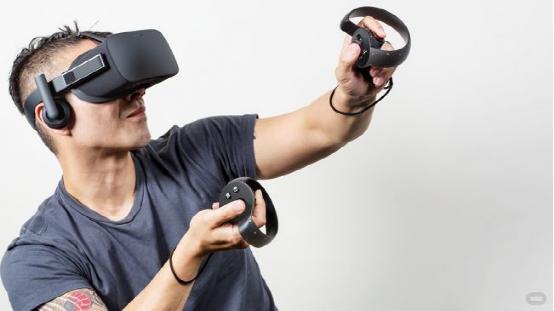Tencent Digital (Compiler: Human) Apple upgraded its iMac last year to improve processor performance and the long-awaited retina screen. However, Apple's share of the computer market has dropped in the second quarter of 2016. To 4.9%, we have judged that Apple may bring a new desktop all-in-one at the conference in September to enhance its performance.

For the new generation of iMac, the most likely change is the use of Kaby Lake processors that Intel has already begun mass production, and also includes the latest AMD Polaris graphics can also help users deal with heavy video clip processing, high-resolution games Wait for the task.
In addition, for the new iMac will meet the requirements of the virtual reality platform, there are some news, let us take a look at the latest news and rumors on the new generation of iMac this year.
Release date
Unless Apple has a big move in the virtual reality field at the September conference, it is unlikely that the new iMac will unveil at next month's conference. With the introduction of a new generation of iMac last year, the next generation of products will most likely be announced at the 2017 WWDC.
Currently as Apple's most popular all-in-one hardware, iMac still has a good sales performance, so Apple's next month's conference will focus on the iPhone 7 and Apple Watch 2.
Taking into account news that Apple will be equipped with AMD's latest Polaris graphics card on the iMac, and for the iMac's release time, it also meets the AMD product release cycle. And not just the iMac, including the Mac Pro and Mac mini, have been tasked with helping Apple rejuvenate the desktop computer market.
Price
The current iMac is priced at 1099 US dollars (about 7330 yuan), equipped with 1080p resolution 21.5-inch screen, while there are 1499 US dollars (about 9950 yuan) 4K version and 1799 US dollars (about 12000 yuan The 27-inch version of the yuan).
Therefore, Apple will continue its current pricing strategy and the new model will maintain its current price system.
Intel Kaby Lake or AMD Zen?
The current iMac skips Intel’s Broadwell architecture and upgrades directly to Skylake processors. Next, Intel’s next-generation Kaby Lake processor is likely to appear on the new generation of iMacs before Intel’s 10nm process to produce Cannonlake architecture. Kaby Lake, 14nm process will be Intel's first choice.
However, despite this, AMD's Zen processor may also appear in the iMac's high-end 27-inch models. This latest eight-core processor has 16 threads and can provide users with performance guarantees. Of course, there is another possibility, that is, Apple skips the Kaby Lake architecture directly and upgrades the Cannonlake architecture directly in the second half of next year.
Support for virtual reality

Although Apple's all-in-one machine does not lag behind its competitors in configuration, it lacks powerful graphics capabilities, especially for those who like to play games but do not want to use Windows systems.
The gradual escalation of virtual reality has made basic requirements for the configuration of computers. Apple believes that it will not disappoint users who wish to play games. And if equipped with AMD Polaris graphics card, it should meet the standards of virtual reality.
According to the latest news from WDDF Tech, AMD has already won orders from Apple in April this year, and its products will be used in desktops and notebooks released by Apple at the end of the year.
Some people say that the Polaris 10 and 11 are the most suitable products for the iMac, especially after using the 16nm and 14nm processes, which are more energy-efficient and more efficient than the 28nm used on the current 27-inch model. The 21.5-inch iMac uses the Intel Iris Pro 6200, which is likely to be replaced by AMD's more affordable products.
In general, Mac users will have sufficient performance support to meet the requirements of virtual reality platform devices, such as Oculus Rift, and the lack of performance on the graphics card has not become a reason to affect the gameplay of Mac users.
New flash memory
It is reported that Apple will increase the capacity for the iPhone 7, and we also hope to launch the use of mobile storage technology on the iMac. The current 27-inch iMac uses a hybrid hard drive configuration, and we hope to see this configuration on the 21.5-inch entry model.
Currently on MacBook Air and MacBook Pro, we have seen the use of 512GB SSDs. Although we don't expect to use SSDs only on iMacs, hybrid HDDs are indeed a good choice.
New standard interface
Apple uses the USB-C interface on the new MacBook, and more products in the future, including new iMacs of course, will be equipped with this new transmission protocol.
Intel's Kaby Lake processor has already supported Thunderbolt 3 and DisplayPort 1.2 interface based on USB 3.1, so the up-to-date interface standard will appear on the iMac in the future.
Source: techradar
.wxdigi { padding:20px 0; border-top: 1px dotted DBDBDB; } .wxdigi dt { display:inline; float:center; margin-right:17px; } .wxdigi dd strong { display:inline-block; padding-top :0px; color:414141; font-size:14px; } .wxdigi dd { font-size:14px; color:606060; }
 Is life boring? Concerned about Tencent Digital WeChat official (ID:qqdigi), the old driver took you the whole point of new games!
Is life boring? Concerned about Tencent Digital WeChat official (ID:qqdigi), the old driver took you the whole point of new games! 